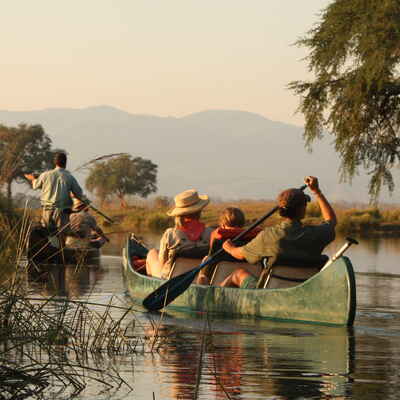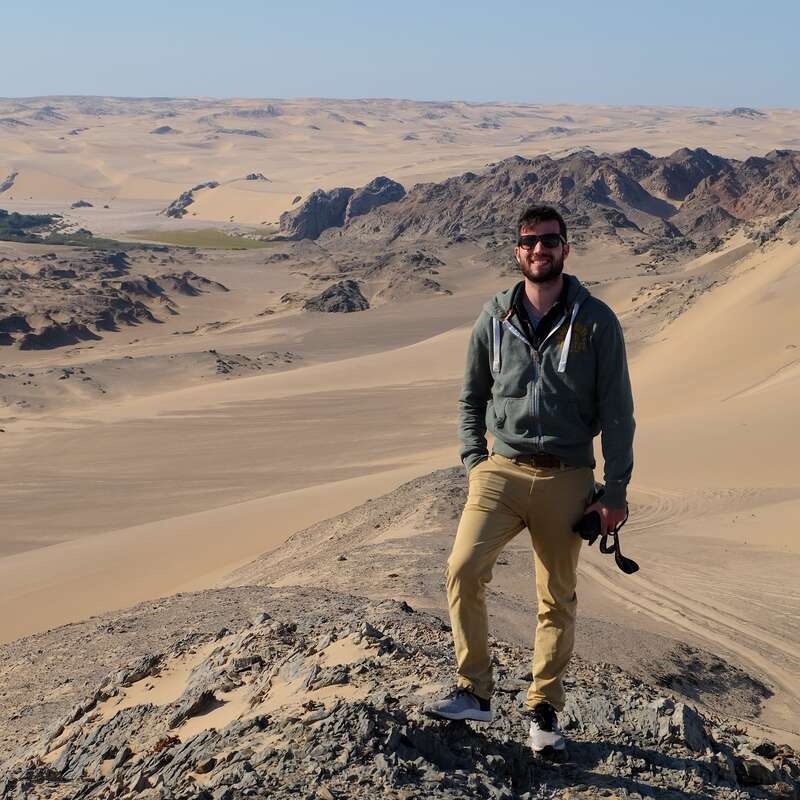About Mana Pools Canoe Trail
Canoeing is a superb way to see the Zambezi Valley, and particularly Mana Pools National Park.
Floating down the river, between Mana Pools and Zambia’s Lower Zambezi National Park, the wilderness surrounds you really is one of the ‘classic’ African safari experiences.
A Mana Pools Canoe Trail is a really wild adventure on an amazing river, beside a breathtaking stretch of national park. The canoeing is mostly relaxed, and can often be utterly magical – although it’s not without its dangers as this is a very, very wild area with plenty of dangerous game around. Come on this for a serious adventure, and some up-close wildlife experiences.
Our view
A Mana Pools Canoe Trail is a really wild adventure on an amazing river, beside a breathtaking stretch of national park. The canoeing is mostly relaxed, and can often be utterly magical – although it’s not without its dangers as this is a very, very wild area with plenty of dangerous game around. Come on this for a serious adventure, and some up-close wildlife experiences.
Accommodation
max. 3 meru tents
Children
Best for 16+
Open
May - Oct
Activities

Birdwatching

Canoeing

Fishing

Fly-camping

Guided walking safari

Private activities

Sleeping under the stars
Traveller reviews of Mana Pools Canoe Trail
4 real, un-edited reviews from Expert Africa's travellers.
Arrived 28 Sep 2019, 3 nights
"Mana Pools Canoe Trail review"
Overall rating: Excellent
Arrived 16 Oct 2015, 2 nights
"Mana Pools Canoe Trail review"
Overall rating: Excellent
Arrived 8 Oct 2012, 3 nights
"Ian and Michelle - Mana Canoe Trail Review"
Overall rating: Excellent
Arrived 26 Jun 2011, 3 nights
"Please see Vundu Camp review"
Overall rating: Excellent
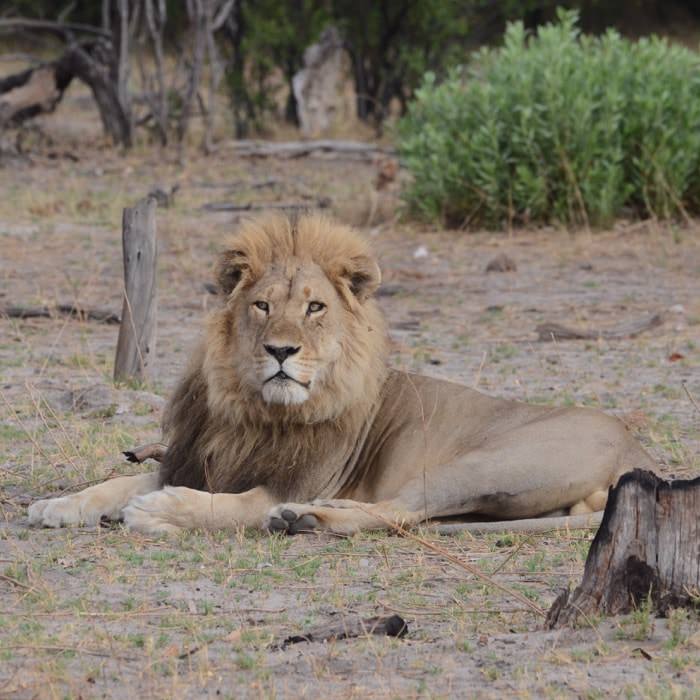
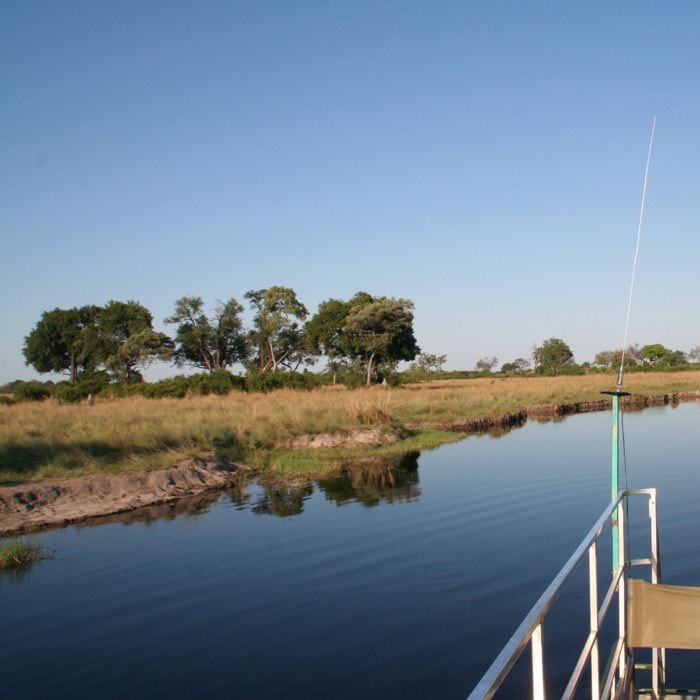
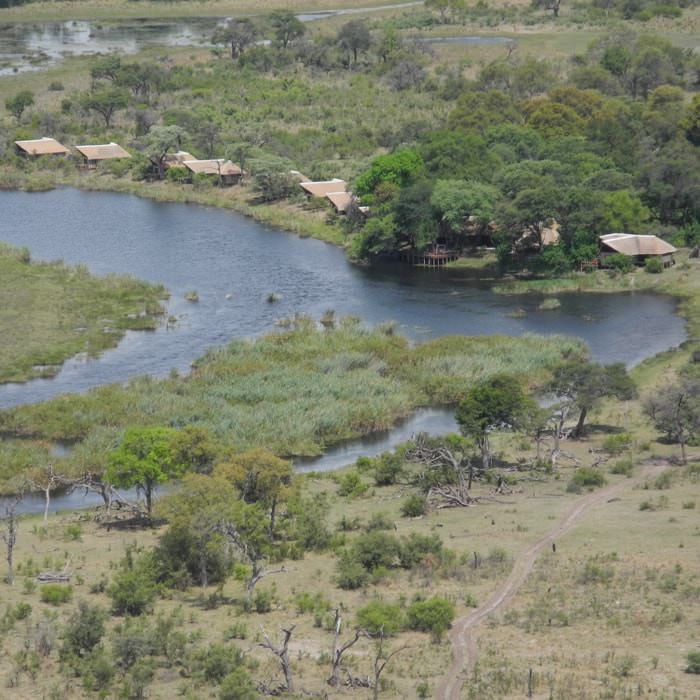
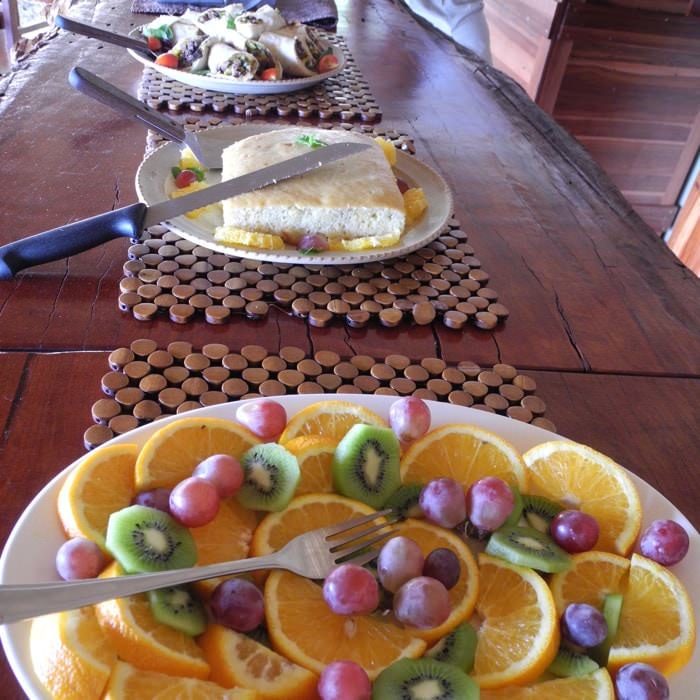
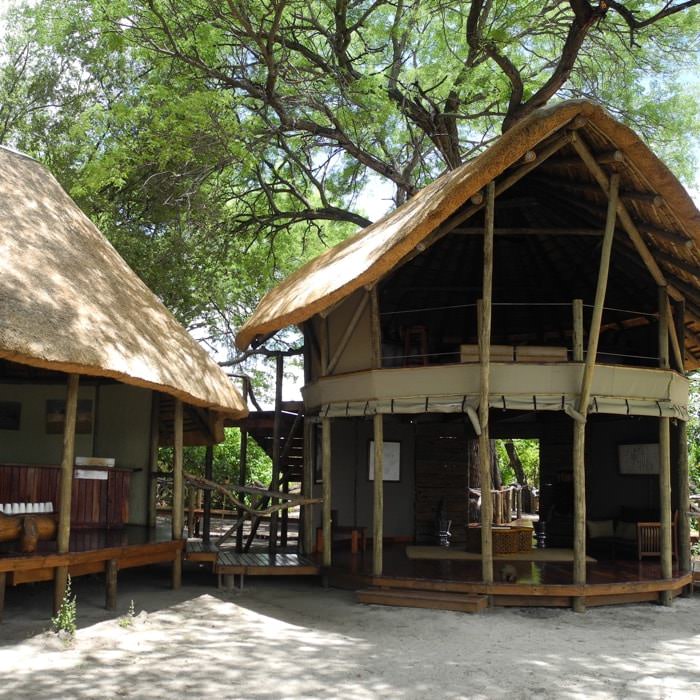
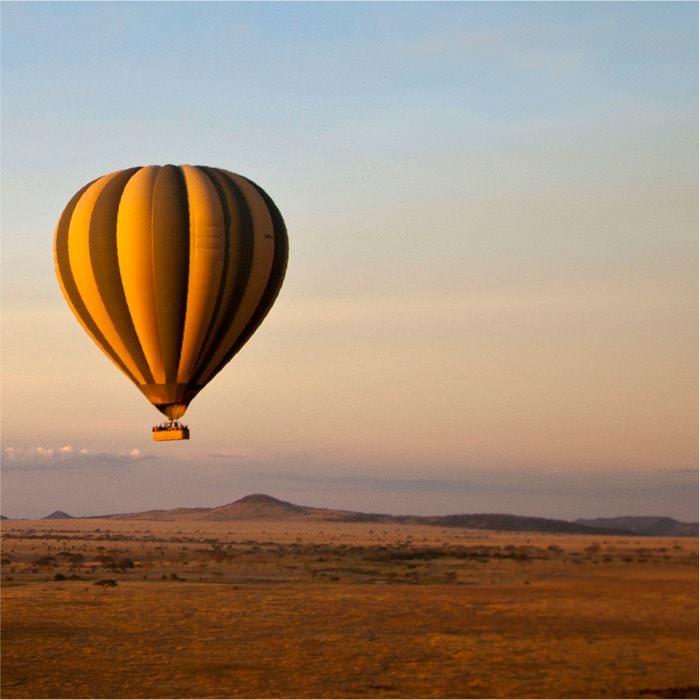
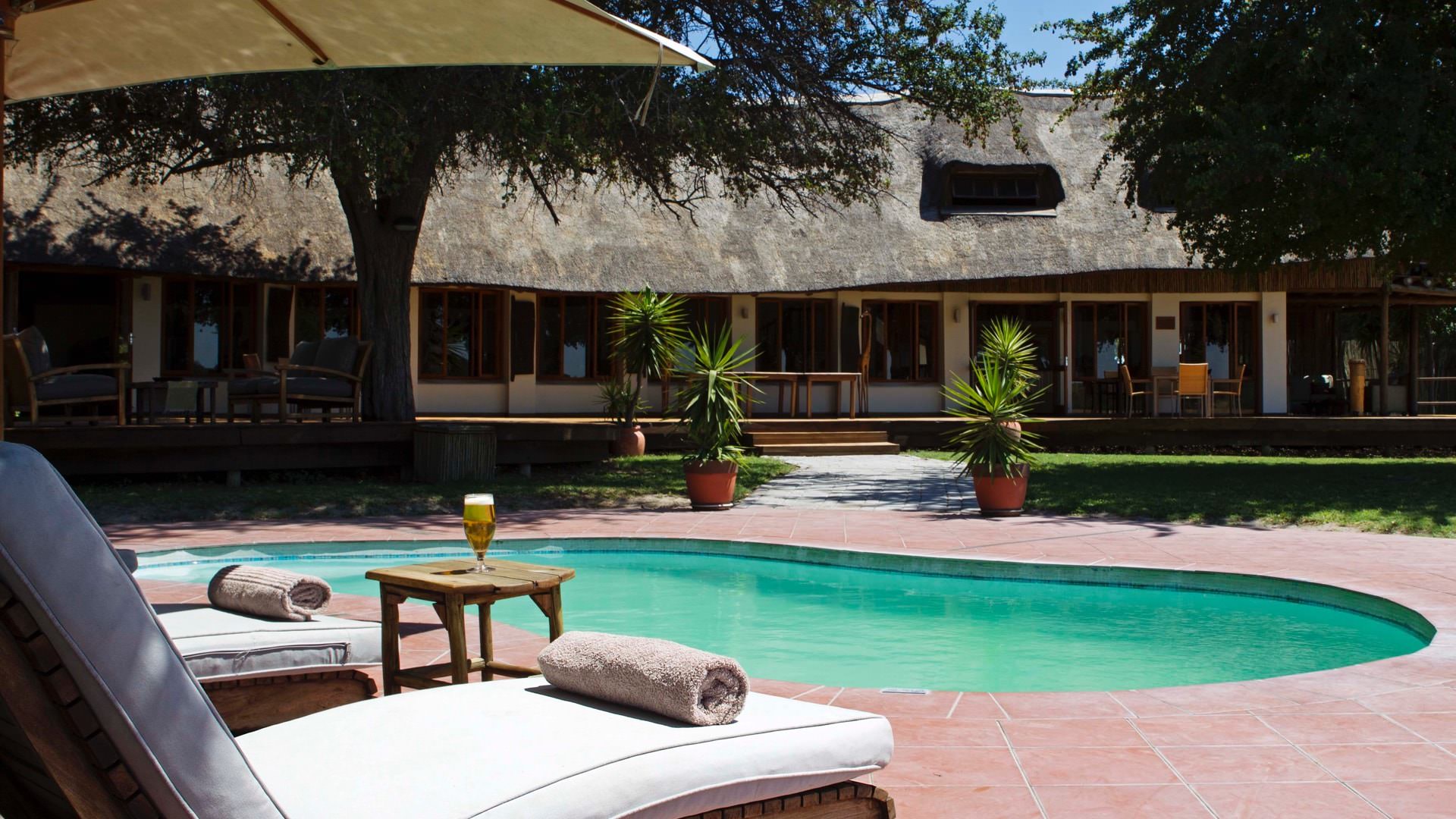
Expert Africa's gallery
When we travel we take lots of photos ourselves to give you a real and un-edited view of the safaris. See our 1 pictures of Mana Canoe Trail to get the candid view.
View galleryMana Pools Canoe Trail: Our full report
Canoeing is a superb way to see the Zambezi Valley, and particularly Mana Pools National Park.
Floating down the river, between Mana Pools and Zambia’s Lower Zambezi National Park, the wilderness surrounds you really is one of the ‘classic’ African safari experiences.
There are several different guides and set-ups with whom we can organize a Mana Pools Canoe Trail, and we will discuss these options with you.
However what they all have in common is that these canoe trails usually take several days, in contrast to many on the Zambian side of the river which tend to only be day-trips. These canoe safaris make real adventures for travellers who want to explore the Zambezi River and Mana Pools National Park in an exciting way, while enjoying the peace and tranquility of a long (up to 65km) stretch of the Zambezi River.
The paddling is generally leisurely, even if occasional stretches paddling into the wind can be tiring. There are usually two people in each Canadian-style fiberglass canoe, sharing the work. Heading downstream, on some stretches you may be able to just float along – with a drink in one hand, enjoying the sun, the scenery and the spectacle
These canoe safaris will usually get you very close to the wildlife. Highlights include paddling past elephants as they make the river crossing and silently gliding past the many species of resident and migrant birds which often perch on overhanging branches. Navigating safely around the 1200-or-so hippos that live along the route can be tricky, whilst any water activities in a river in which there are such fearsome crocodiles is bound to have fraught moments. Hence although these trails can be magical, they aren’t for the nervous or faint-hearted.
With an experienced guide, you can periodically pull up on the riverbank to take a guided walking safari, allowing you to get even closer to some of Mana Pool’s dry-land game – and sometimes it is possible to get exceedingly close to the elephants, wild dogs, and other game in this park.
At night, simple fly-camps are set up on the river’s edge and provide basic but surprisingly comfortable accommodation. Dinner is eaten around the campfire, and despite the noises of the bush – sleep normally comes swiftly after a day’s paddling. After a pre-dawn wake up, the canoes are usually launched again just in time to catch the sunrise from the water.
We only recommend multi-day canoe trips here which are accompanied by a guide who holds both a canoe guide’s license on the Lower Zambezi (i.e. qualified ‘Zimbabwean river guides’) and also a full Zimbabwean professional guide’s license. Sometimes these will be held by two separate guides who both accompany the trip, at other times one guide will hold both licenses – or there will be two canoe guides, one of whom holds a full ‘pro’ license.
In either event, these qualifications (and the high levels of experience needed to hold them) will mean that you have with you an armed and experienced guide who can lead you walking, as well as canoeing. So you’re not just confined to paddling on the river, but can also explore its banks and floodplains.
Having said this, canoeing here is not for the faint-hearted. This river has some strong currents; there are plenty of large crocodiles and hippos about. Most animals have fairly predictable behaviour, but not all – so these trips are not devoid of risk. Because of this, we are very careful; we only recommend canoe trails conducted by guides with high levels of experience and qualifications for this stretch of river.
Geographics
- Location
- Mana Pools National Park, Zimbabwe
- Ideal length of stay
- Canoe trails are typically about 3-nights long, although are often combined with a similar length of time on a walking safari.
- Accessible by
- Fly-and-Transfer
Food & drink
- Usual board basis
- Full Board & Activities
- Dining style
- Group Meals
- Dining locations
- Outdoor Dining
Special interests
- Birdwatching safaris
- The Zambezi River is the life blood of Mana Pools, attracting all manner of life. Floating down river in a canoe or exploring inland on foot with an expert guide on the Mana Canoe Trail is a spectacular way to enjoy some of Zimbabwe's best birding.
- See ideas for Birdwatching safaris in Zimbabwe
Children
- Attitude towards children
Our travellers’ wildlife sightings from Mana Canoe Trail
Since mid-2018, many of our travellers who stayed at Mana Pools Canoe Trail have kindly recorded their wildlife sightings and shared them with us. The results are below. Click an animal to see more, and here to see more on our methodology.

100% success

100% success

100% success

100% success

100% success

0% success

0% success

0% success

0% success

0% success

0% success

0% success

0% success

0% success

0% success
Health & safety
- Malarial protection recommended
- Yes
- Dangerous animals
- High Risk
- Fire safety
Activities
Birdwatching
Canoeing
Fishing
Fly-camping
Guided walking safari
Private activities
Sleeping under the stars
Extras
- Disabled access
- Not Possible
- Laundry facilities
- 0
Plan and book your trip with Expert Africa
All of our trips are tailor-made, so we'll always adapt them to suit you. Talk to an Expert and let us plan and arrange your perfect trip.

Talk to an Expert
Call or email us now! We’ll match you with the Specialist in our team who is best suited to help you. Then together we can start planning your trip.

Set up your itinerary
Based on our experience and your ideas, your specialist will create a detailed, costed itinerary. We’ll refine it together, until we have a trip that you’re perfectly happy with.

Prepare for your trip
The same Specialist will make the seamless arrangements for your trip, send you detailed travel documents, and be available to answer any questions before you depart.

Travel with peace of mind
After you set off, you’ll be cared for by our partners in Africa, most of whom have worked with Expert Africa for decades. And if you ever need us urgently, we’re available 24/7.

When you return
We love to learn about your trip, and so will always be grateful if you’ve the time to give feedback to your Specialist when you return.
Mana Pools Canoe Trail's location
Look closer at the environment and surroundings of Mana Canoe Trail.
Other lodges in Mana Pools National Park
Alternative places to stay in this same area.
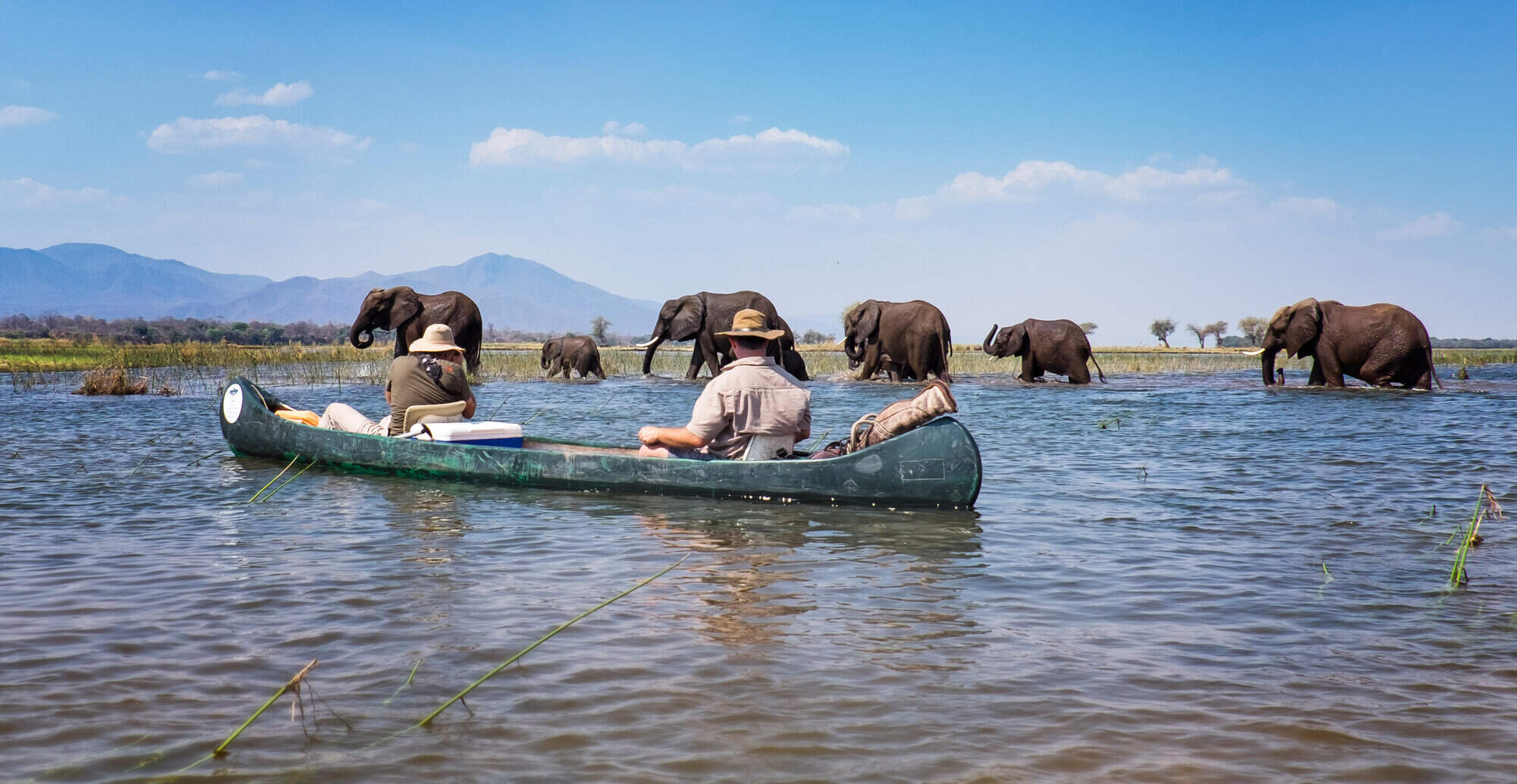
Vundu Camp
Overlooking the Zambezi River in Mana Pools National Park, Vundu Camp is a small, comfortable bushcamp offering top-notch guiding.
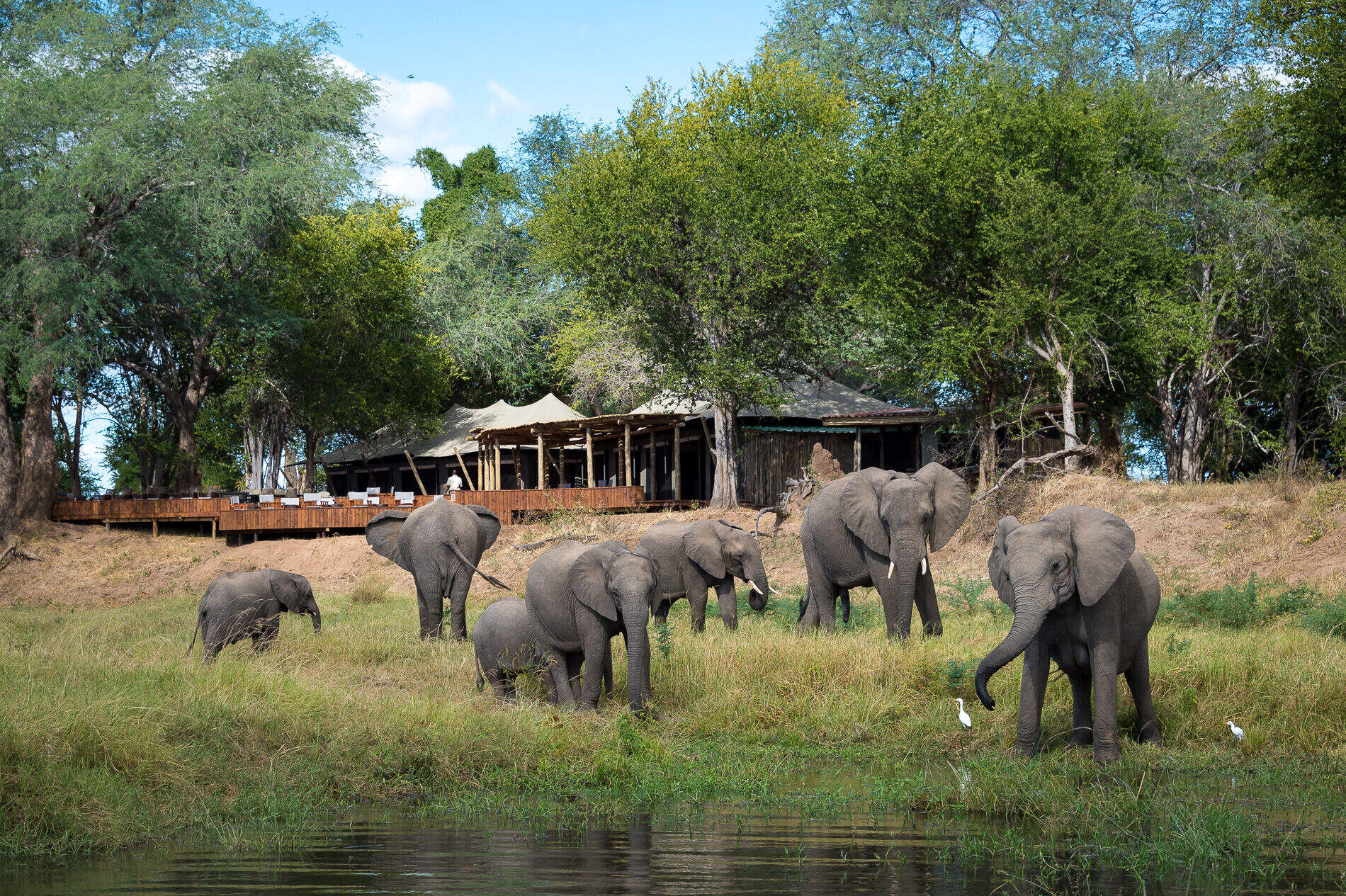
Ruckomechi Camp
In a very scenic spot beside the Zambezi, Ruckomechi is a smart camp offering excellent walking, river safaris, night and day 4WD game drives.
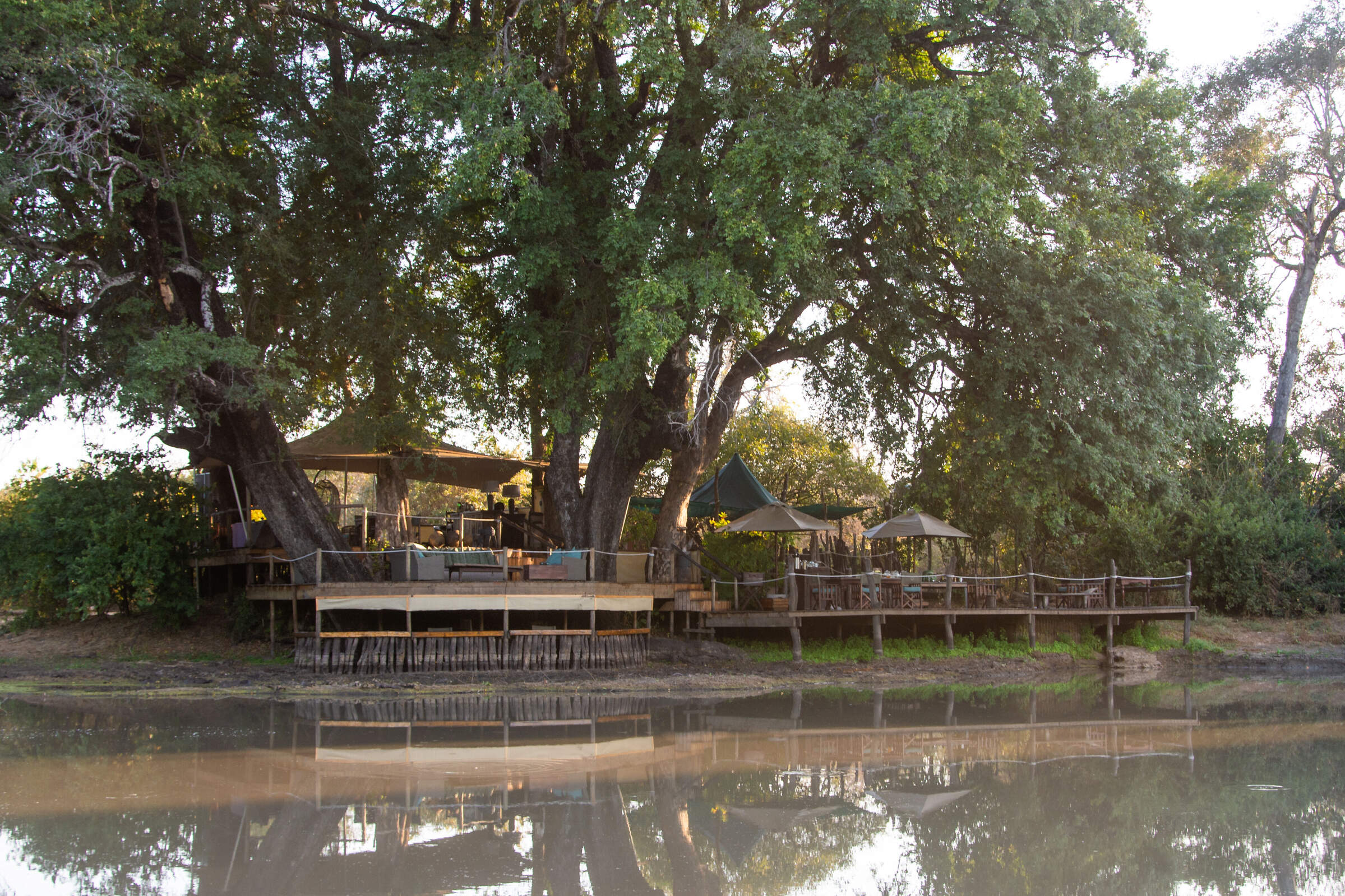
Kanga Bush Camp
Unspoiled and peaceful, Kanga Bush Camp is located in a remote and exclusive part of Mana Pools National Park, overlooking the Kanga Pan.
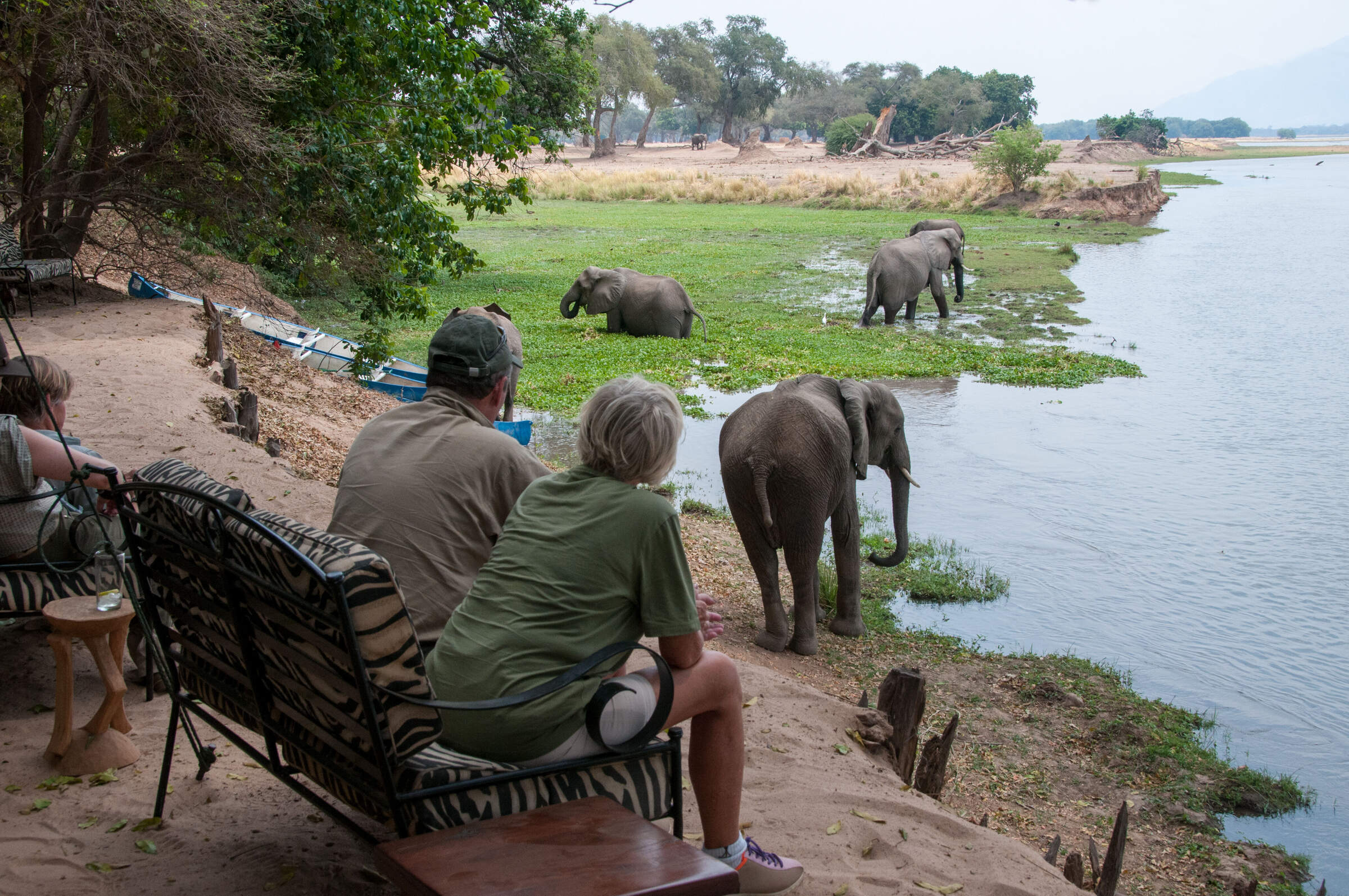
Stretch Ferreira Safaris
Stretch Ferreira Safaris Camp is a small, owner-run camp on the banks of the Zambezi River in Mana Pools National Park, with the emphasis on great guiding.
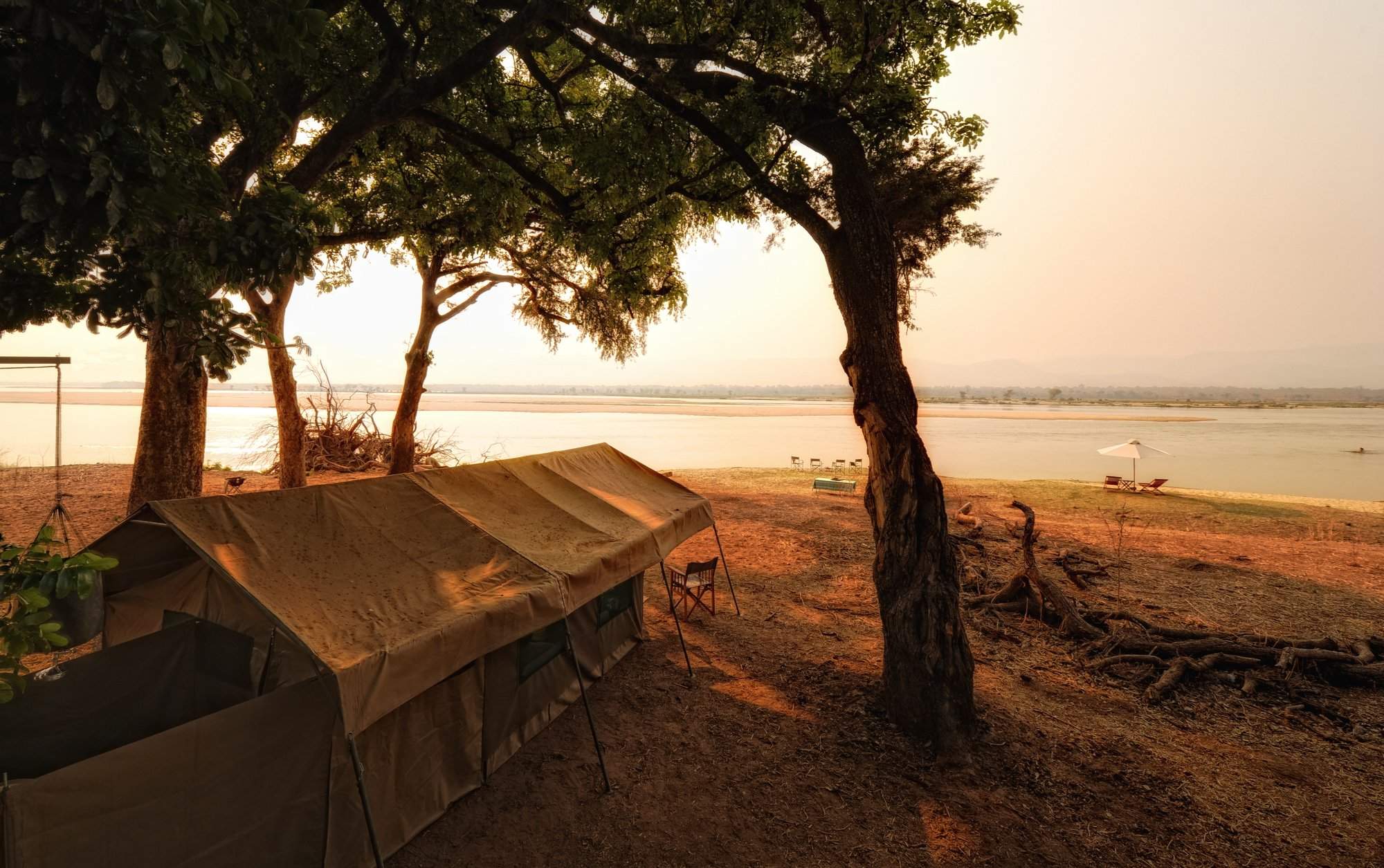
Zambezi Expeditions
Zambezi Expeditions is a simple, semi-permanent camp along the Zambezi River that offers excellent guiding and standards of service.
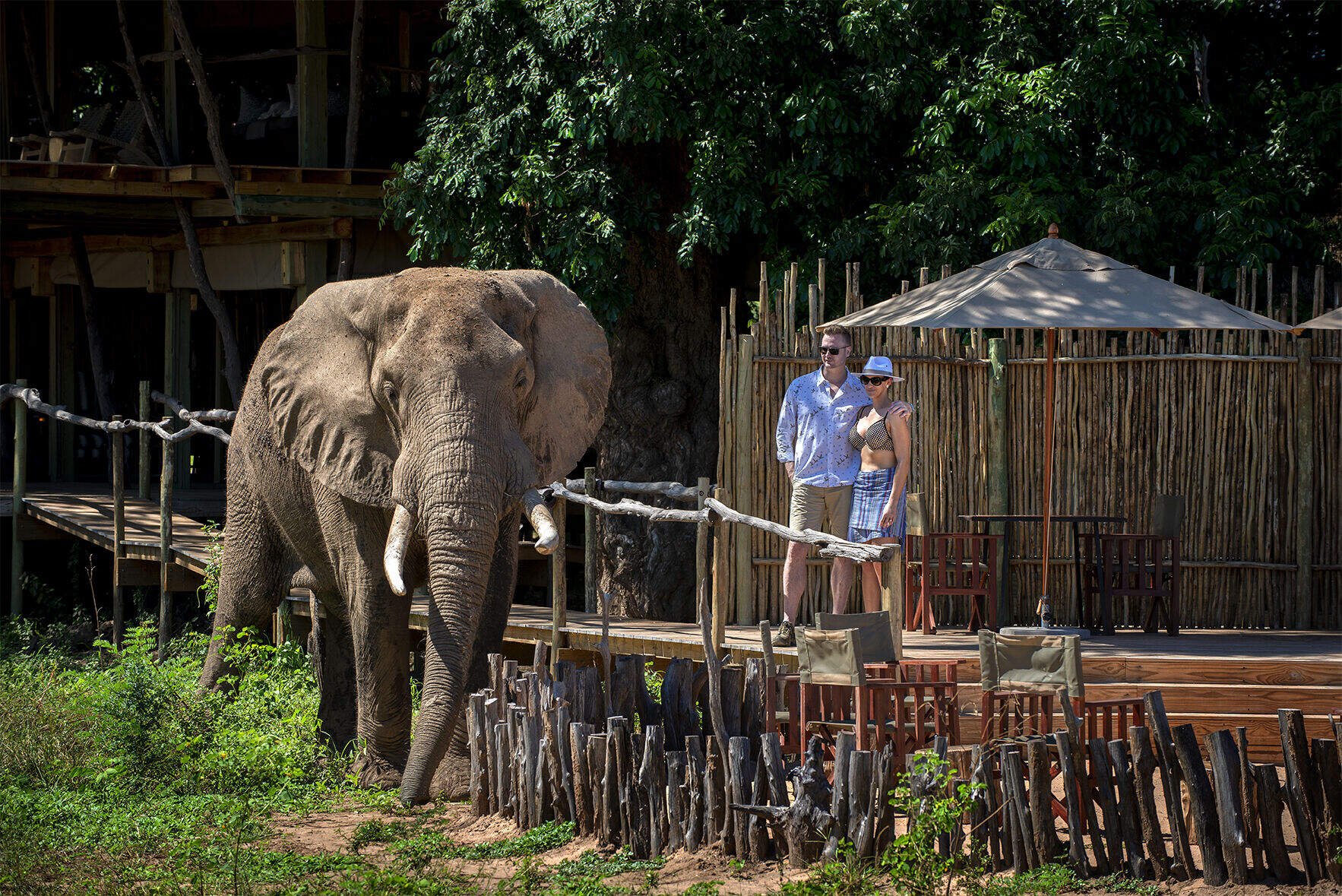
Nyamatusi Camp
Overlooking the Zambezi River, the luxury Nyamatusi Camp occupies a pristine wilderness environment.
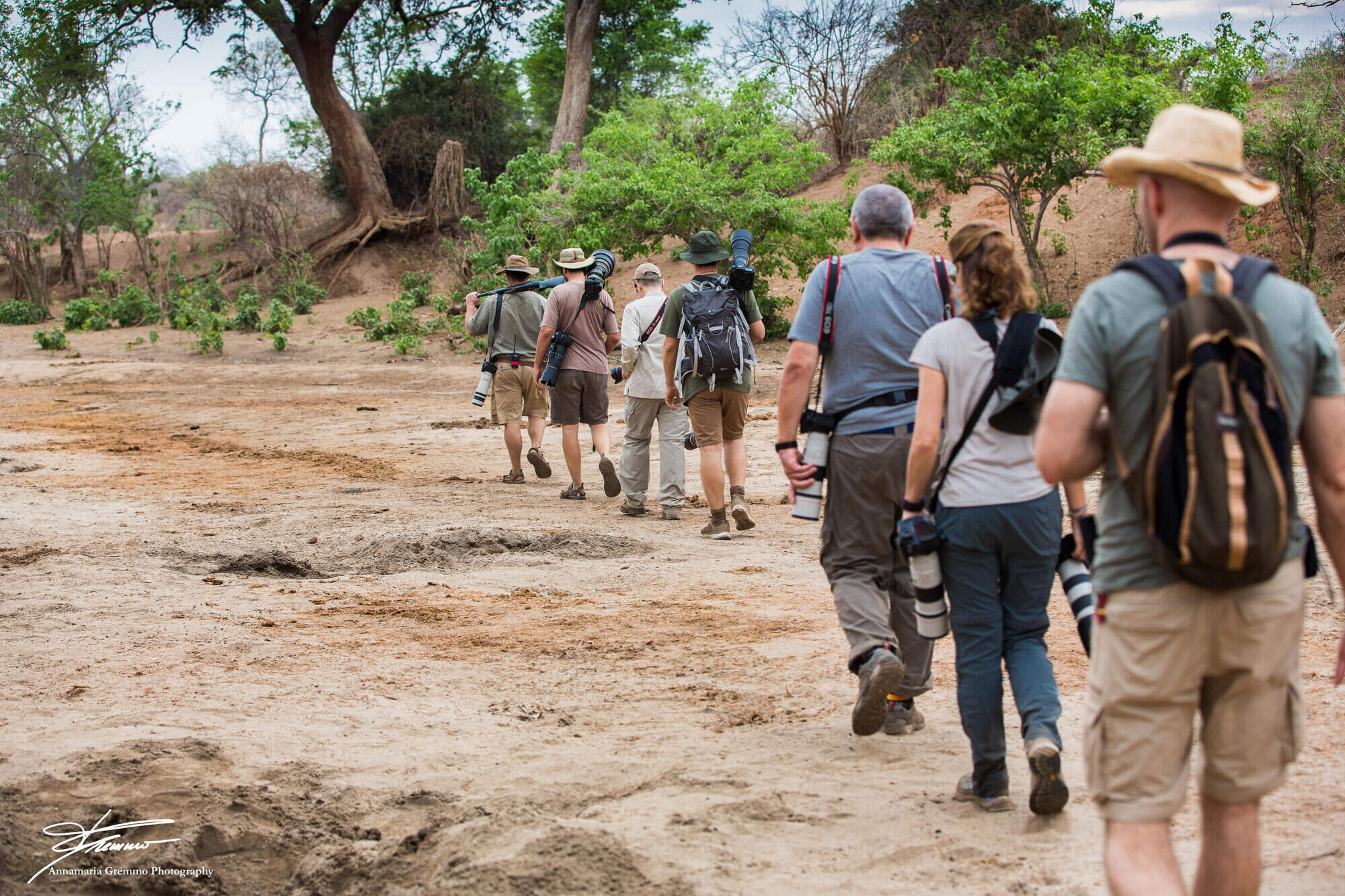
Little Vundu
Closely associated with Vundu Camp, Little Vundu has the same great location and quality of guides, and is occasionally used for private group bookings.
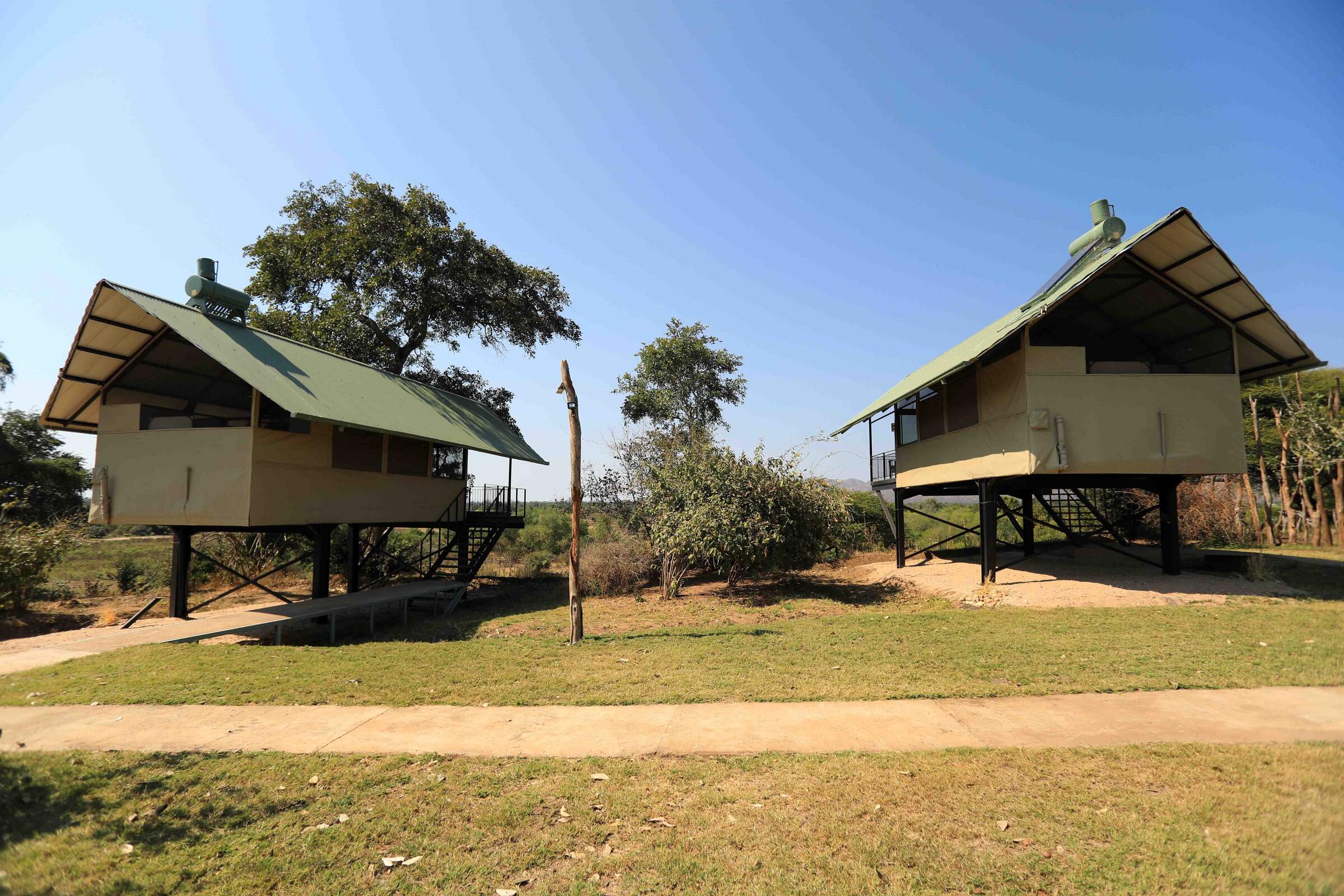
Kavinga Safari Camp
Kavinga is a comfortable tented camp tucked away in a less-visited area of Mana Pools National Park with surprisingly good wildlife and an excellent hide.
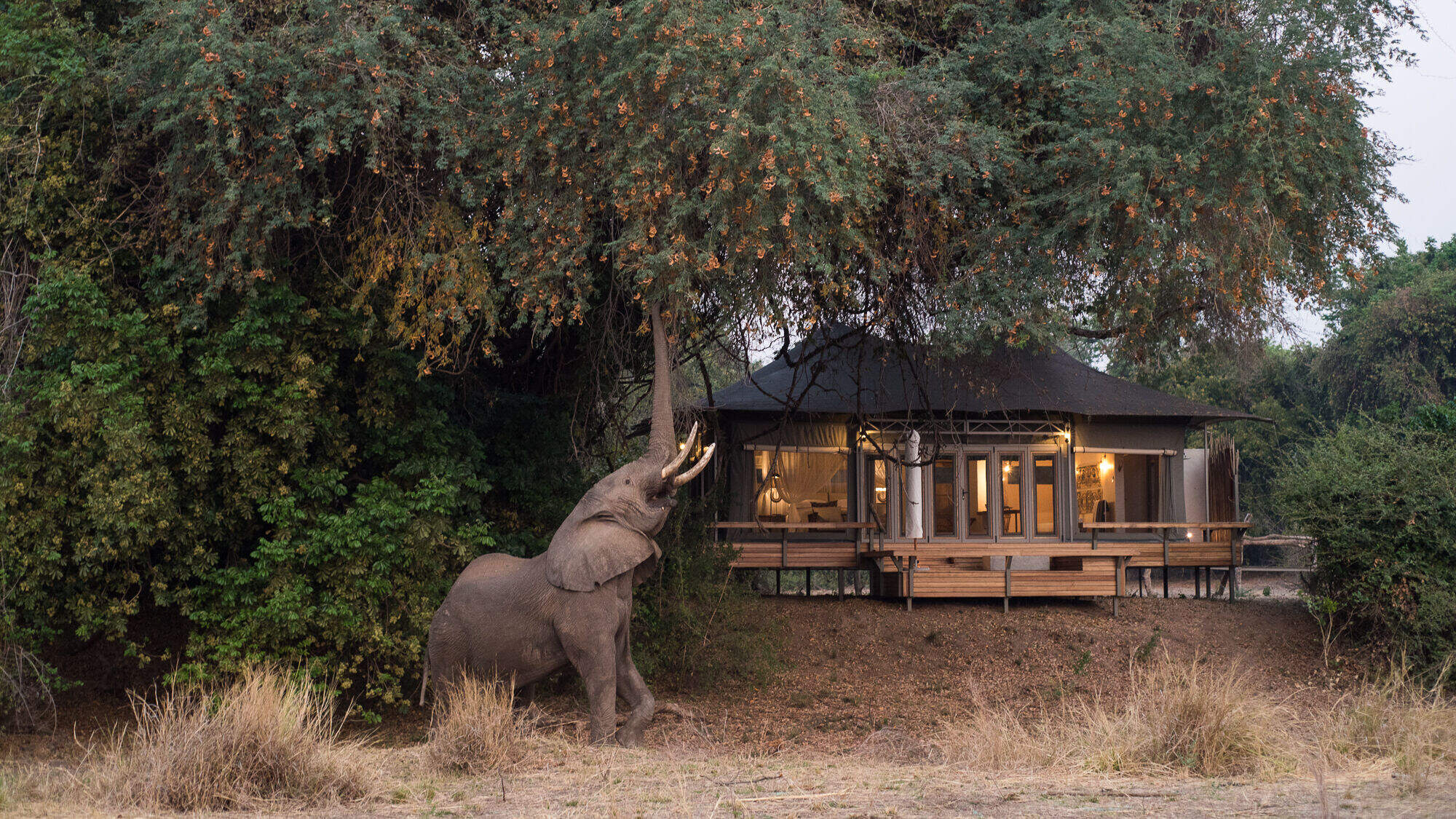
Chikwenya Camp
One of the original properties in Mana Pools area we are excited to be featuring Chikwenya Camp again.
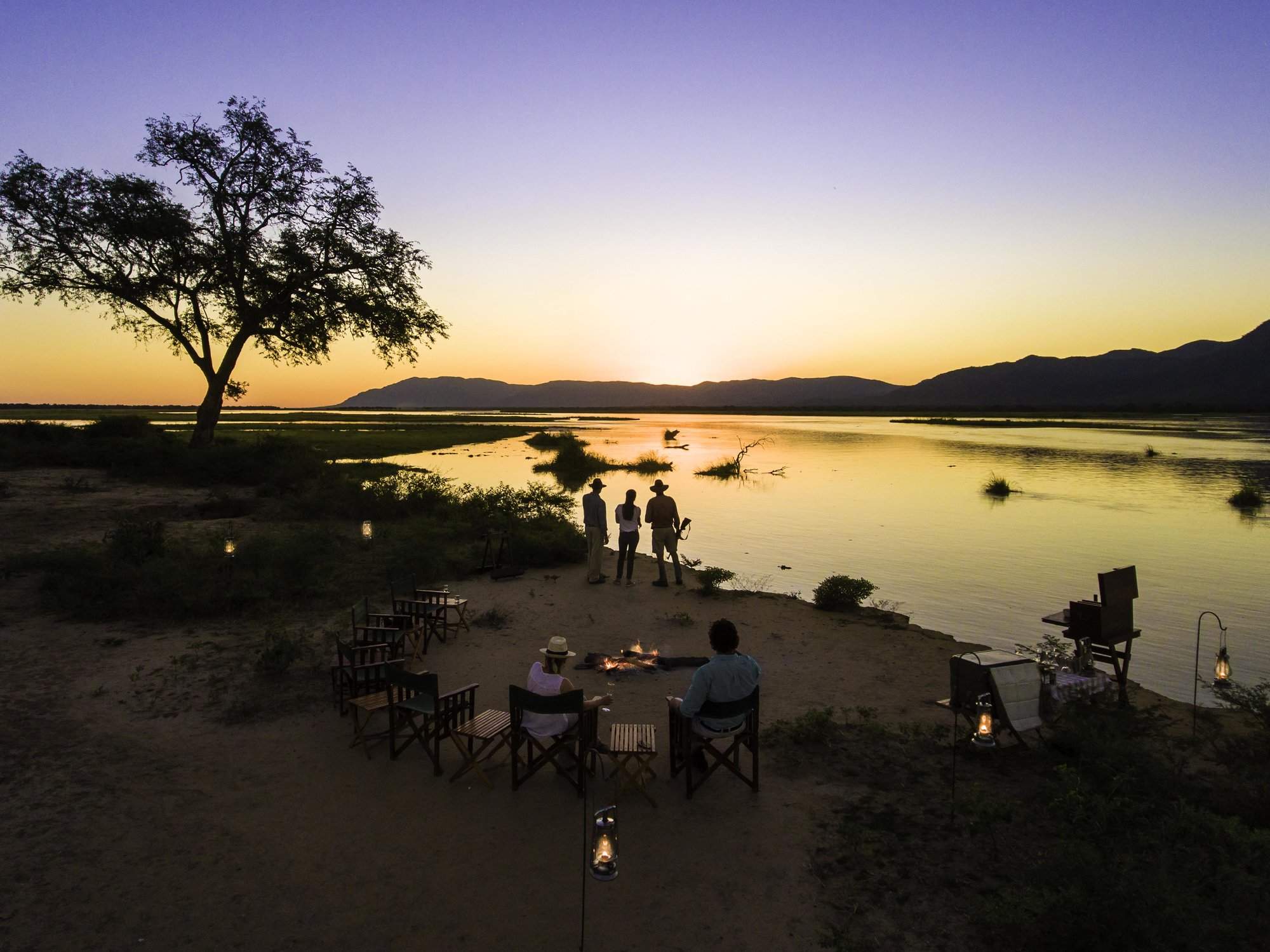
John's Camp
John's Camp is a semi-mobile tented camp offering walking safaris, game drives, and fishing in Zimbabwe's Mana Pools National Park.
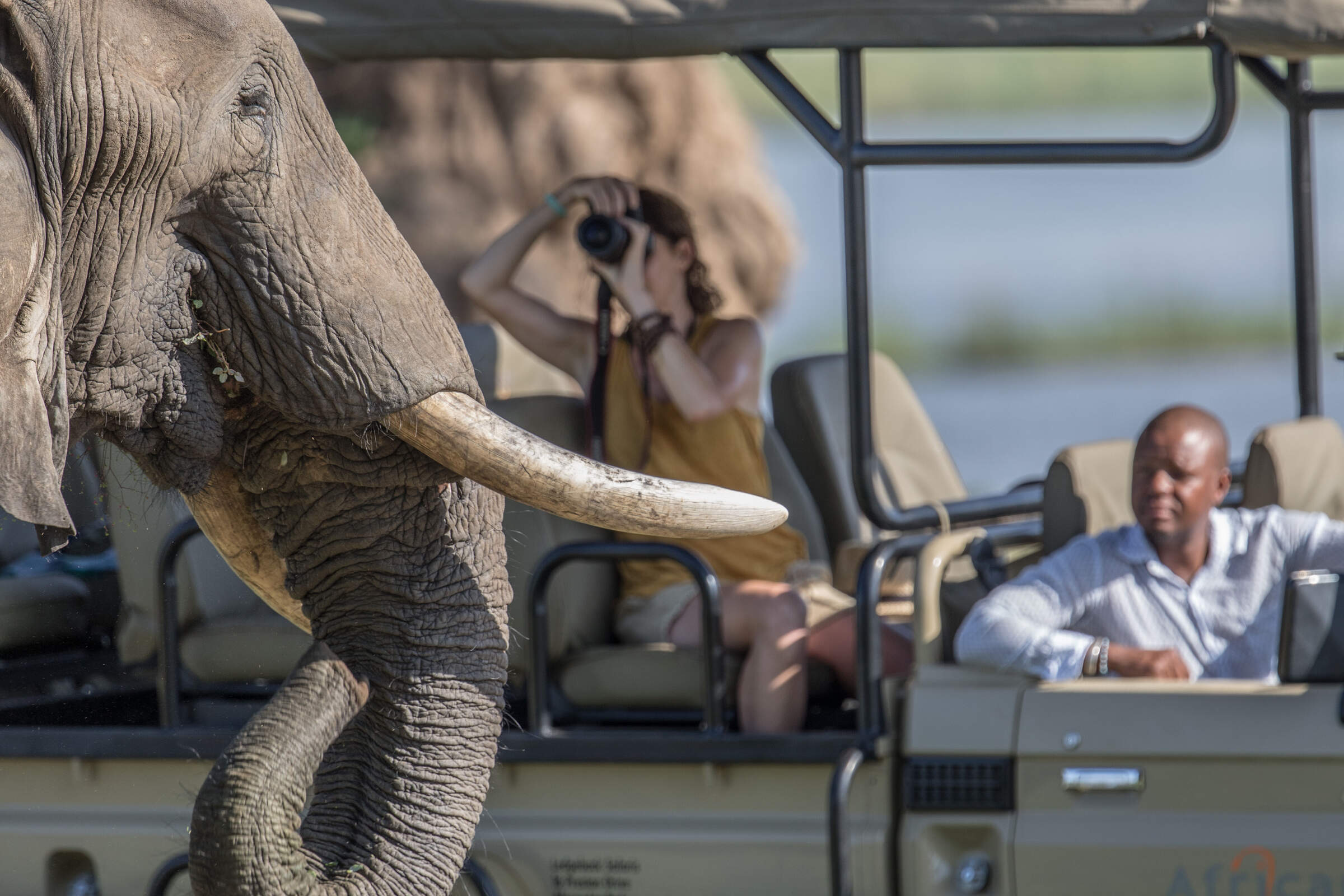
Nyamatusi Mahogany
Nyamatusi Mahogany is a family-friendly, yet remote and luxurious safari camp in Mana Pools National Park.
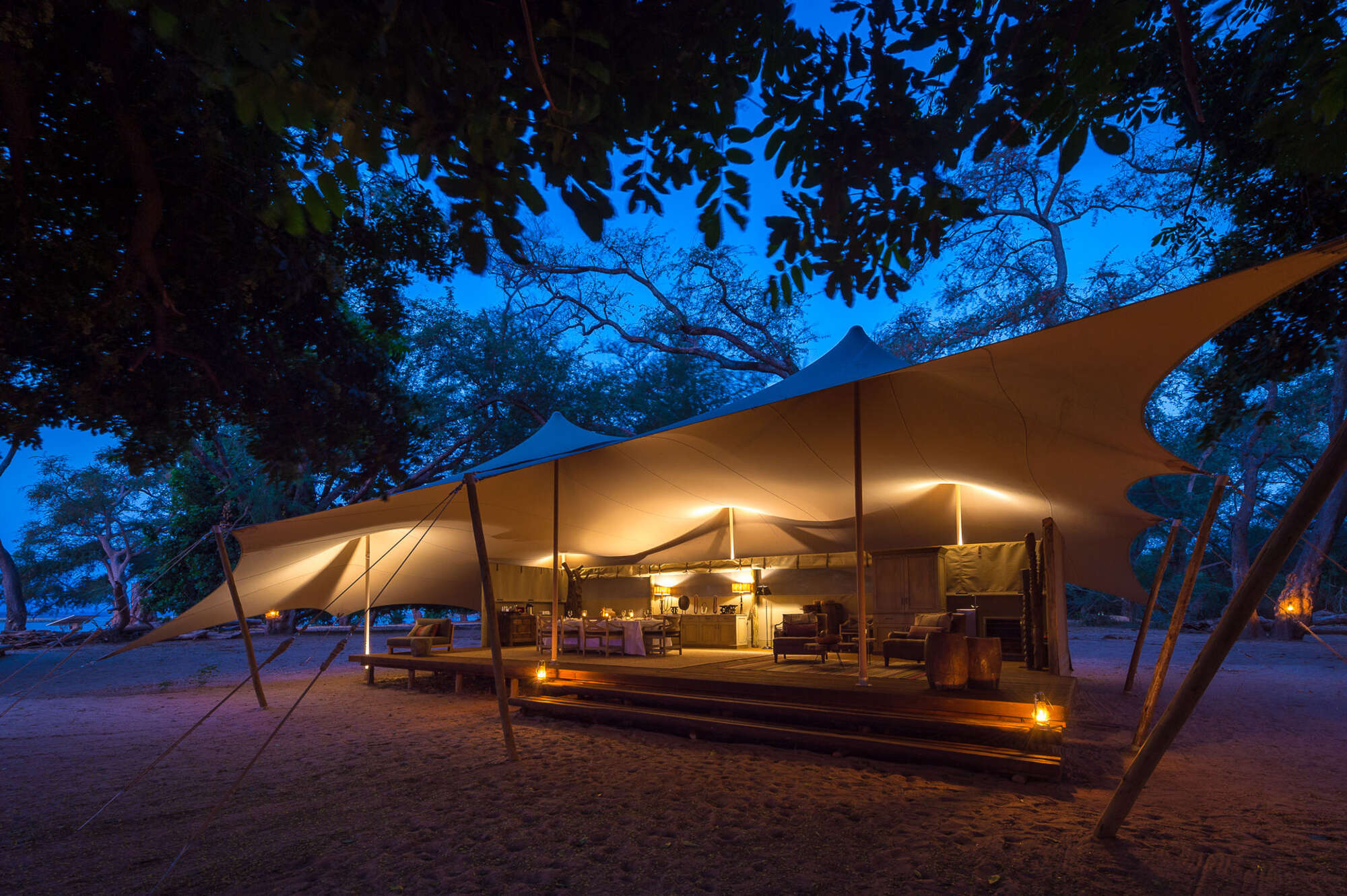
Little Ruckomechi
In a shady spot beside the Zambezi, Little Ruckomechi is a small but luxurious camp offering a reange of activities including walking and canoe trips.
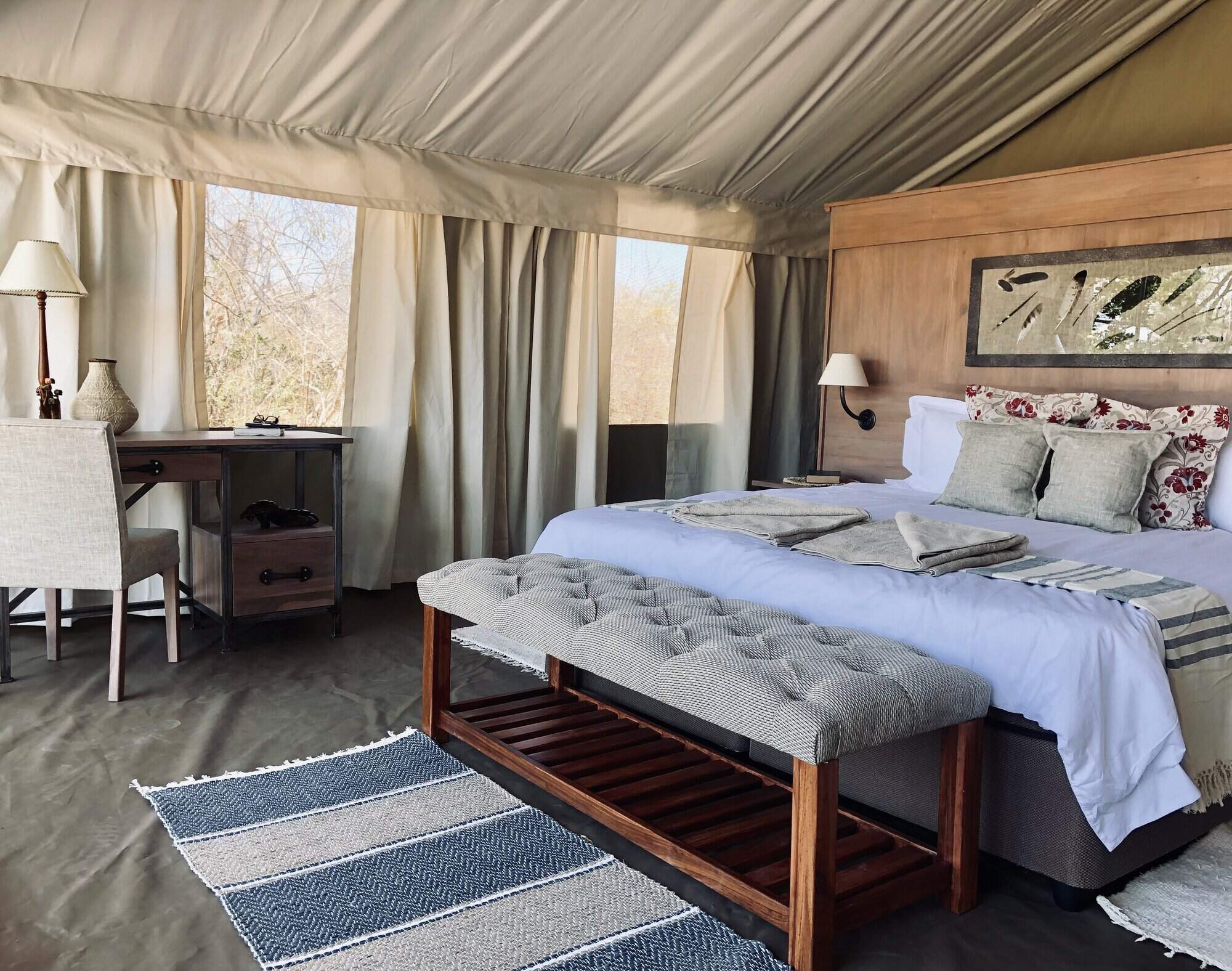
Ingwe Pan Camp
Ingwe Pan Camp is due to open in May and will be located in a remote area in the north of the Mana Pools National Park
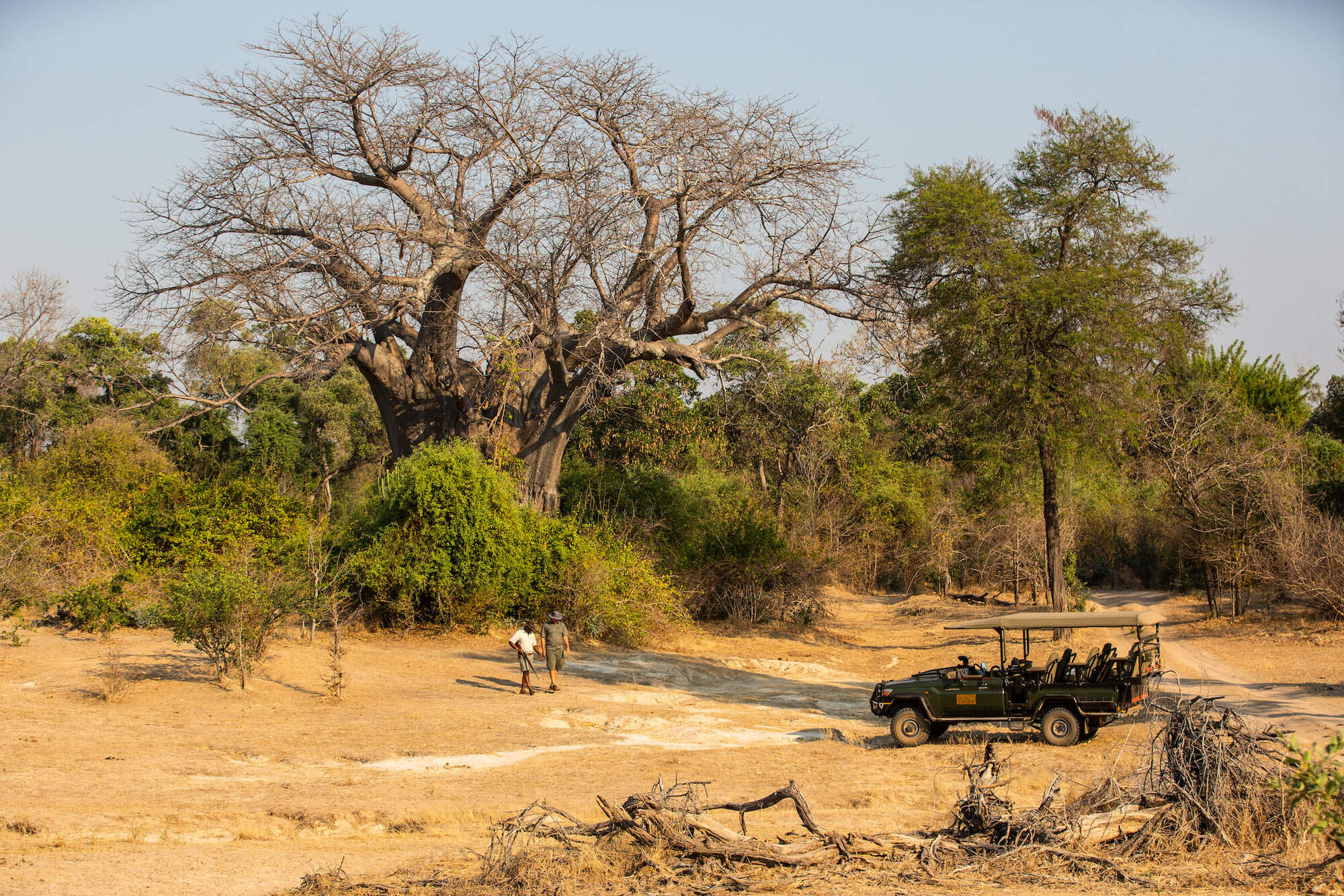
Tembo Plains Camp
Building commenced on Tembo Plains Camp in February 2021. Details are sparce at this stage but we'll update this page once we know more.
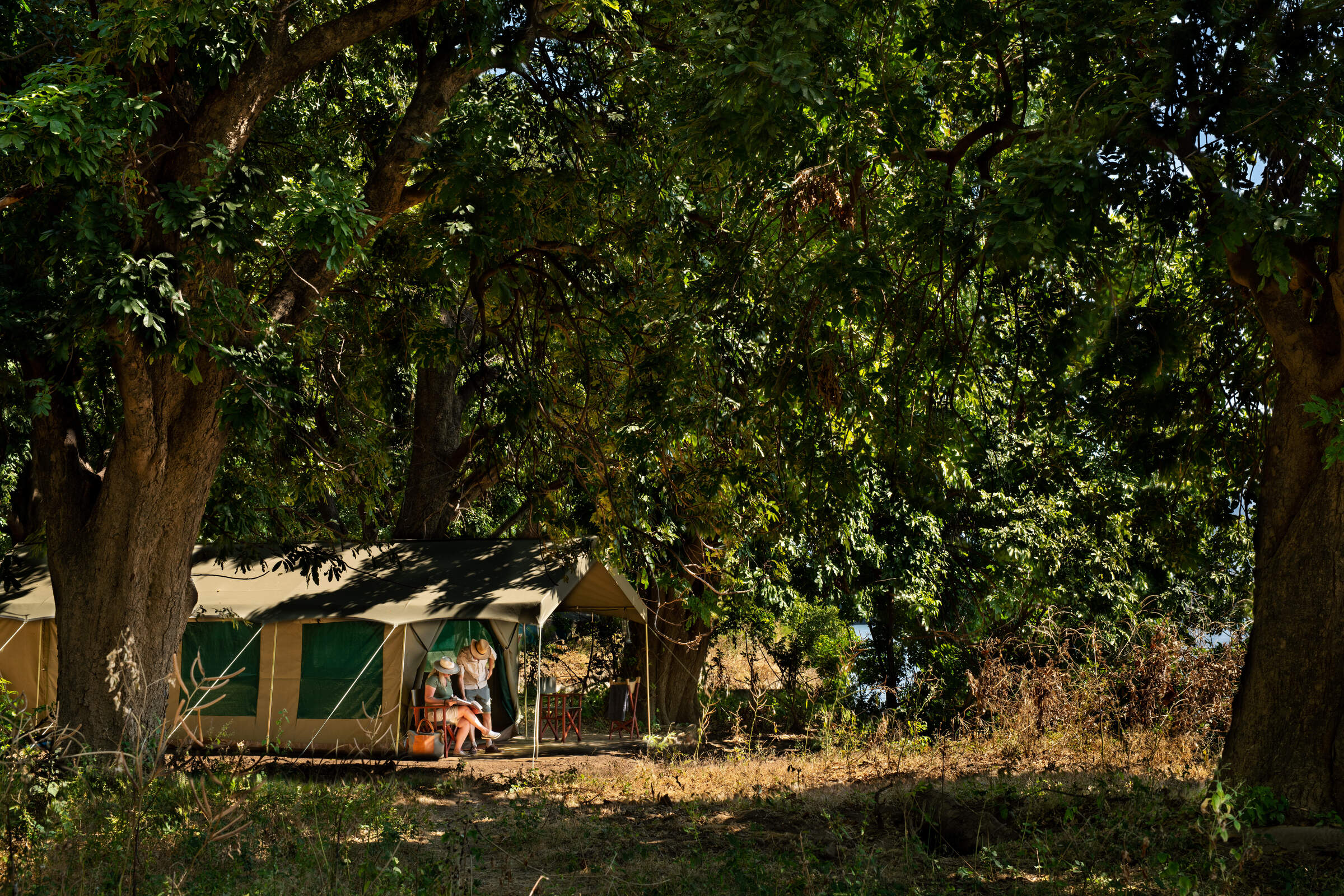
Mana River Camp
Mana River Camp sits on the banks of the Zambezi River, a site formerly occupied by Mwinilunga Camp.
When to go to Mana Pools National Park
Our month by month guide: What it's like to visit Mana Canoe Trail in Mana Pools National Park
Jan
Feb
Mar
Apr
May
Jun
Jul
Aug
Sep
Oct
Nov
Dec
Zimbabwe in January
January falls in the middle of Zimbabwe’s rainy season and is the wettest month of the year. Heavy rainfall occurs most days, flooding seasonal rivers and waterholes, with the occasional sunny spell.
With the high levels of precipitation the wildlife in the national parks becomes widely dispersed, taking advantage of the abundance of food and water, and is easily hidden by the thick, green bush.
While sightings of larger animals are possible, and many species drop their young at this time, game viewing is often sparse. However, many migratory species of bird arrive in Zimbabwe making it a peak month for birding.
The rains create incredibly sticky mud in Mana Pools National Park, preventing access and causing camps to close for the season. The majority of the camps in other parks remain open, with low rates attracting a smattering of visitors.
- Peak of the rainy season: hot & humid with heavy rain most days
- Bush exceptionally thick and green, with poor game viewing
- Species such as impala drop their young
- All camps in Mana Pools closed
- Very few visitors, and low rates at open camps
Our view
A time to avoid if possible
Weather in January
Zimbabwe in February
February remains well within Zimbabwe’s rainy season. Although total rainfall drops, relatively short thunderstorms can still be expected most afternoons. On the plus side, there is a greater chance of some sunshine in-between.
Much of the country remains waterlogged, closing access to Mana Pools and severely restricting walking safaris in other parks. While game drives and canoeing remain an option, the abundance of water disperses animals, and thick grass can make it difficult to spot larger species, but birding remains excellent. Conversely, this is a great time of year to view the landscape, and is excellent for photographers. Sporadic cloud cover and clear air can make for some spectacular sunsets too, particularly over Lake Kariba and the Zambezi River where the reflections off the water add to the beauty.
- Generally wet with frequent thunderstorms & hot humid days
- Poor wildlife viewing due to dispersed animals & thick bush
- Clear air, green landscapes & exceptional sunsets
- All camps in Mana Pools closed
- Very few visitors & low rates at camps that are open
Our view
This is not a great time to visit
Weather in February
Zimbabwe in March
March is the final month of Zimbabwe’s rainy season, when the rains start to trail off and sunny days become the norm. However, some days the clouds can still build, breaking into thunderstorms in the afternoon.
Mana Pools remains closed throughout the month but the majority of camps in Hwange, Matusadona and Gonarezhou remain open. Here, the landscape is green and alive, with migrant species of birds taking advantage of the abundant insect life. Larger animals remain elusive though, and walking safaris remain restricted.
By this time of year, the rains have normally trickled down to the Zambezi River and the flow of water over the Victoria Falls starts to increase, but without kicking up too much spray to obscure the views.
- Last month of the rainy season: hot, humid days with occasional storms
- Lush vegetation means good birding, but poor game viewing
- Views of the Victoria Falls improve
- All camps in Mana Pools closed
- Open camps have few visitors & low rates
Our view
This is not a great time to visit
Weather in March
Zimbabwe in April
April marks the end of Zimbabwe’s rainy season and the end of summer. Clear skies are the norm, with just the occasional shower. Temperatures start to drop, failing to reach 30ºC most days and dropping down to around 10ºC at night.
As the rain fades the landscape starts to dry out. While the vegetation remains thick and green, the soil in Mana Pools dries enough for camps to open, and the only camps to remain closed are the most remote bushcamps in Hwange. Although viewing of larger animals remains tricky, the improved weather starts to draw back visitors, as do prices significantly below those in the peak season.
The Zambezi River and flow of water over the Victoria Falls is at its highest, although large amounts of spray diminish views of the waterfall itself.
- Transitional period, with much lower rainfall & falling temperatures
- Wildlife is still dispersed & hard to see, but sightings improving
- Views of the Victoria Falls often obscured by spray
- Camps in Mana Pools open
- Visitors start to return & camps increase their rates
Our view
A good time to visit, with pros & cons
Weather in April
Zimbabwe in May
The first month in the dry season, May is also Zimbabwe’s first month of winter. If the rains are particularly late in a given year, you may catch the odd shower, but you can expect clear and sunny days the majority of the time. While it’s warm in the daytime, temperatures drop to single digits at night, so bring a warm jumper and gloves for early morning drives.
With the rain having cleared the air, the sky is bright blue, and it’s the best time of year for photography.
Even the most remote camps in Zimbabwe are now open. With the lack of rainfall, vegetation dies back significantly, and seasonal rivers return to sand. Not only does this open up the possibility of walking safaris, but wildlife viewing becomes much more reliable.
- Start of the dry season, with milder days and cold nights
- Game viewing significantly improves as vegetation dies back
- Vegetation starts to turn from green to brown
- Best time for photography with crystal clear air
- Visitors start to return; all camps open & rates increasing
Our view
A very good time to visit
Weather in May
Zimbabwe in June
During June you can virtually be guaranteed of dry and sunny days, although temperatures continue to drop, and can get close to freezing at night in Hwange National Park. Jumpers, jackets and gloves are strongly recommended for early mornings and evenings.
The opportunities for wildlife viewing improve throughout the month as the landscape rapidly dries, and the animals start to gather on the banks of the Zambezi River and around Hwange’s waterholes.
Water levels in the Zambezi River start to drop, reducing the amount of spray kicked up at the Victoria Falls and greatly improving visibility, but still allowing a full curtain of water to cascade over the edge.
- Middle of winter, with night-time temperatures close to freezing
- Game viewing significantly improves throughout the month
- Views of the Victoria Falls are at their best
- Noticeable increase in visitor numbers
- Camps considerably more expensive
Our view
A very good time to visit
Weather in June
Zimbabwe in July
July sits in the middle of Zimbabwe’s dry season. Although it’s warm at midday, temperatures are generally cold and in Hwange it’s been known to drop below freezing at night, with the lower-altitude Mana Pools feeling a bit warmer.
With wildlife clustering around the few remaining waterholes, sparse vegetation, and some of the best views of the Victoria Falls, this is one of the most popular times to travel, with camps charging peak season rates to reflect this. That said, visitor numbers to the country in general remain low, and outside of the Victoria Falls it’s rare for any areas to feel crowded.
- Middle of the dry season with almost no chance of rain
- Clear sunny days, but very cold nights
- Wildlife viewing good; game drives and walking safaris unrestricted
- Views of the Victoria Falls at their best
- Camps charging peak season rates
Our view
A very good time to visit
Weather in July
Zimbabwe in August
While August is the end of winter and temperatures are starting to creep up, mornings and nights are still cold, and game drives in open vehicles can feel particularly chilly. Well into the dry season, the landscapes will have mostly transformed from green to brown and wildlife viewing in Zimbabwe’s national parks is approaching its best. Due to dust kicked up into the atmosphere and smoke from bush fires you may start to notice a haze on the horizon, but this doesn’t significantly impact photography.
August is one of the most expensive months, and the pleasant weather and decent game viewing attracts lots of visitors. While the national parks rarely feel crowded, Victoria Falls accommodation can sell out a year in advance.
- Warm, sunny days but cold mornings & nights; almost no chance of rain
- Wildlife viewing nearly at its best
- Landscape turns brown, & an atmospheric haze develops
- All camps charging peak season rates
Our view
Fantastic: the very best time to visit
Weather in August
Zimbabwe in September
Temperatures in September rarely drop below 15ºC, but are yet to reach the oppressive highs of summer. It will normally have been five months since the last drop of rain, so antelope and elephants cluster around whatever water remains, with predators never too far away.
The landscape is very brown, and the haze building on the horizon takes some of the colour out of the sky, so while animal subjects are plentiful, the background is not ideal for photography.
The combination of incredible wildlife viewing, hot and sunny weather, and cheaper flights outside of the school holidays make this the most popular time of year to travel, and availability at the camps can become limited up to a year in advance.
- The best month for weather, with a pleasantly warm temperature range
- One of the best months for game viewing
- Victoria Falls starting to dry but still impressive on Zimbabwean side
- All camps are charging peak season rates
- Most popular time to travel, & space can be limited
Our view
Fantastic: the very best time to visit
Weather in September
Zimbabwe in October
October is the last month of the dry season with little chance of rain but building humidity. While the higher elevation of Hwange National Park limits temperatures to the 30s Celsius, they can easily top 40ºC in Mana Pools.
With little vegetation or water, wildlife is drawn to the few remaining water sources and viewing is at its best; visitors who brave the heat can be rewarded with some exceptional sightings, although haze in the air diminishes photos. Maximum visibility and dense wildlife concentrations can also make for very rewarding walking safaris, although the heat can make them uncomfortable.
Water levels in the Zambezi at the Victoria Falls drop significantly, and large stretches of the waterfall are a dry cliff-face – although it never dries completely. Camp rates remain at their peak, but visitor numbers drop as people avoid the heat.
- Last month of the dry season; very hot with building humidity
- Wildlife viewing at its very best
- Dust & smoke in the air diminish photographic opportunities
- Victoria Falls starting to look very dry
- Camp rates remain at their peak
Our view
A very good time to visit
Weather in October
Zimbabwe in November
November is a transitionary period, with high temperatures and humidity. While they can’t be predicted with any precision, the first rains normally arrive halfway through the month, in the form of thunderstorms lasting a few hours each day.
Early November is a popular time to travel as the camps drop their rates, so if you’re lucky you can get peak-season game viewing at low-season rates. This is a gamble though as if the rains do arrive, animals are no longer limited to a few dangerous waterholes and will disperse into the bush. While all the camps in Mana Pools intend to remain open, the rains can make the airstrips unusable so you may find yourself moved to a different park, a risk that increases through the month.
- Typically the start of the rains in Zimbabwe
- Temperatures & humidity levels remain high
- Wildlife viewing rapidly diminishes as the rains arrive
- Camps remain open, but risk early closure in Mana Pools
- Much cheaper time to travel as camps drop their rates
Our view
A good time to visit, with pros & cons
Weather in November
Zimbabwe in December
By December the rainy season has begun in earnest; this is one of the wettest months in Zimbabwe, with heavy thunderstorms most afternoons and occasionally continuous rain for a couple of days. While temperatures start to cool down the high levels of humidity can make the heat feel more oppressive.
With the rains comes an explosion of green growth, and the dust and smoke are washed out of the air. The resulting scenery – with the occasional bright blue skies – can be fantastic for photographers. Thick vegetation and plentiful water makes viewing of larger animals tricky, but with migratory species arriving the birding is at its best.
All camps in Mana Pools and the remote Hwange camps close, with those remaining open charging their lowest rates.
- One of the wettest months in Zimbabwe
- High temperatures & levels of humidity
- Wildlife viewing poor, but birding good
- Lush green landscapes & clear air; great for landscape photography
- All camps in Mana Pools closed
Our view
This is not a great time to visit
Weather in December

Looking for inspiration on where to travel next?
Visit our trip chooser to explore your options and find inspiration for your perfect African adventure
Inspire me